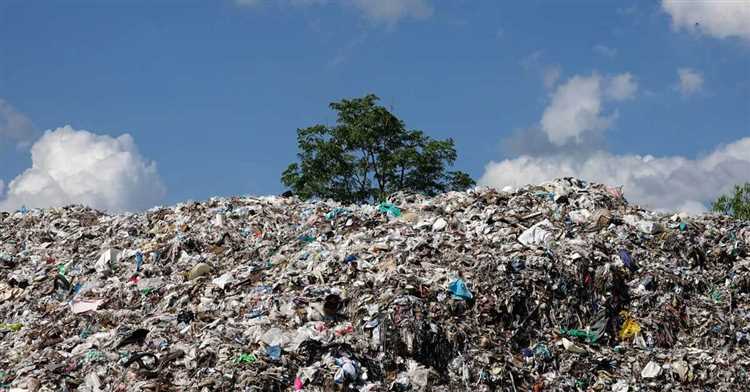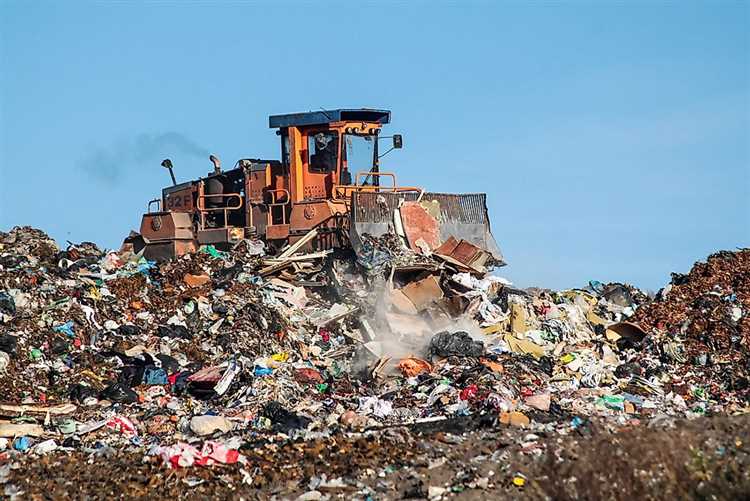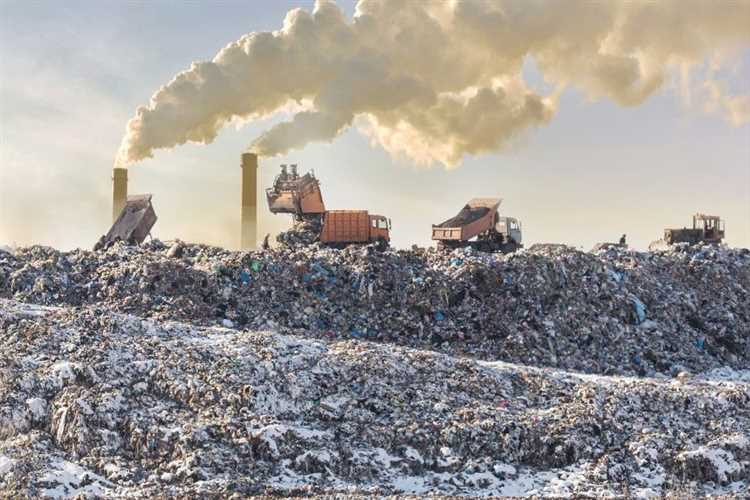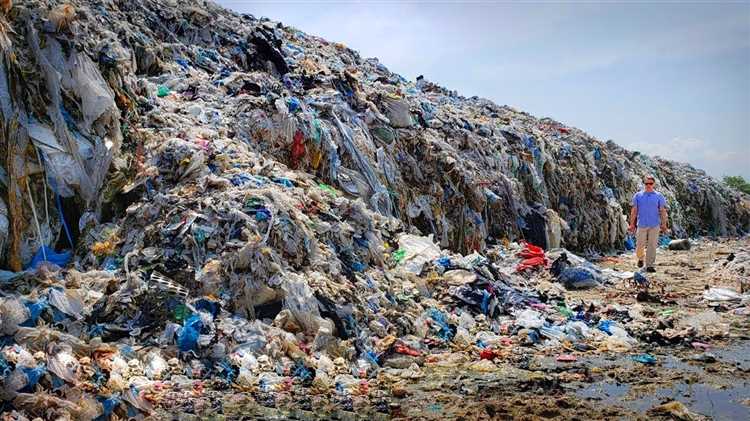
Have you ever wondered where all the waste we produce goes? The world’s largest landfill is a fascinating site that holds unimaginable amounts of trash. Located in a remote area, this landfill stretches for miles and serves as a stark reminder of the environmental impact humans have on the planet.
Located in [Insert Location], this landfill is a monument to our consumer society. It is here that the waste from residential and commercial areas across the region is brought to be disposed of. Mountains of garbage fill the landscape, reaching heights so staggering they seem unbelievable. The sheer scale of this landfill is beyond comprehension, making it a truly awe-inspiring sight
But where exactly is this massive landfill located? [Insert Location] is nestled in a forgotten corner of the world, far away from bustling cities and civilization. Its isolation has allowed it to grow to its immense size, largely unnoticed by the public. However, the impact it has on the local environment and surrounding communities cannot be ignored.
- Overview of Landfills
- Facts about the World’s Largest Landfill
- Size and Location
- Waste Composition
- Environmental Impact
- Environmental Impact of the Landfill
- Efforts to Manage and Reduce Landfill Waste
- 1. Recycling Programs
- 2. Composting
- Q&A:
- Where is the world’s largest landfill located?
- How big is the world’s largest landfill?
- When was the Fresh Kills landfill closed?
- What is the status of the Fresh Kills landfill now?
Overview of Landfills

Landfills are designated areas where waste is disposed of and managed in a controlled manner. They are a common method of waste management worldwide, enabling efficient waste disposal while minimizing environmental impacts. The concept of landfills dates back many centuries, with early civilizations using designated sites to discard waste.
Modern landfills are designed to ensure proper waste management and environmental protection. They are constructed with multiple layers of liner materials, such as clay and plastic, to prevent contamination of soil and groundwater. These liners also help to control the emission of harmful gases, such as methane, which is produced by the decomposition of organic waste.
Landfills are typically divided into different sections or cells, each containing a specific type of waste. This segregation allows for better management and potential future extraction of valuable materials. Landfills also incorporate systems for collecting and treating leachate, which is the liquid that forms as water passes through the waste. Proper leachate management is essential to prevent groundwater contamination.
Landfills are subject to regulations and guidelines set by local and national authorities. These regulations dictate the type of waste that can be disposed of, as well as the design, operation, and closure requirements for landfills. Adequate monitoring and maintenance are necessary to ensure compliance and prevent potential environmental hazards.
Although landfills are an important part of waste management, efforts are being made to reduce reliance on them. Recycling, composting, and waste-to-energy technologies are increasingly being implemented to divert waste from landfills. These initiatives aim to reduce environmental impacts and promote sustainable waste management practices.
Overall, landfills play a crucial role in waste management, providing a controlled and regulated means of disposing of waste. Properly managed landfills can minimize environmental impacts and ensure the safe handling of waste, contributing to a cleaner and healthier environment for future generations.
| Advantages of Landfills | Disadvantages of Landfills |
|---|---|
| Efficient waste disposal | Potential soil and groundwater contamination |
| Potential extraction of valuable materials | Generation of harmful gases, such as methane |
| Proper disposal of hazardous waste | Visual and aesthetic impacts on surrounding areas |
| Regulated and controlled waste management | Reliance on finite land resources |
Facts about the World’s Largest Landfill
In this section, we will explore some interesting facts about the world’s largest landfill. It is important to understand the scale and impact of this landfill, as it provides valuable insights into the environmental challenges we face.
Size and Location

The world’s largest landfill is located in… [insert location here]. It covers an area of [insert size here] and is [insert distance here] from [insert nearest major city here]. The sheer size of this landfill is staggering, making it a significant contributor to environmental pollution.
Waste Composition

One interesting fact about the world’s largest landfill is the composition of the waste found within it. It is estimated that [insert percentage] of the waste consists of [insert primary waste material here], followed by [insert percentage] of [insert secondary waste material here]. This composition highlights the need for improved waste management and recycling efforts.
| Primary Waste Material | Percentage |
|---|---|
| [insert primary waste material here] | [insert percentage] |
| [insert secondary waste material here] | [insert percentage] |
Environmental Impact
The environmental impact of the world’s largest landfill cannot be ignored. The accumulation of waste releases harmful gases into the atmosphere, contributing to air pollution and climate change. Additionally, the improper disposal of certain waste materials can contaminate soil and water sources, leading to further ecological damage.
Furthermore, the presence of a large landfill in close proximity to human settlements can have detrimental effects on human health. The release of toxins and pollutants can lead to respiratory issues, skin diseases, and other health problems.
Efforts must be made to address the environmental impact of the world’s largest landfill and find sustainable solutions for waste management.
Environmental Impact of the Landfill
The world’s largest landfill has had a significant and wide-ranging environmental impact.
One of the most concerning issues is the release of greenhouse gases into the atmosphere. As organic waste decomposes in the landfill, it emits large amounts of methane, a potent greenhouse gas. Methane is known to contribute to climate change, trapping heat in the atmosphere and leading to global warming.
The landfill also poses a threat to local air quality. As waste breaks down, it releases noxious gases such as hydrogen sulfide, ammonia, and volatile organic compounds. These gases can cause respiratory problems, eye irritation, and even contribute to the formation of smog. Additionally, the strong odor emanating from the landfill can be a source of discomfort for nearby residents.
The impact on soil and water quality is another major concern. Landfills can contaminate nearby soil and groundwater through the leaching of hazardous substances from the waste. This can result in the pollution of local water sources and damage to ecosystems. Toxic chemicals and heavy metals found in landfill waste can have long-lasting effects on plants, animals, and aquatic life.
Furthermore, the presence of a landfill can have detrimental effects on the aesthetics and biodiversity of the surrounding area. The visual blight of a large landfill can detract from the natural beauty of the landscape and negatively impact tourism and property values. The destruction of habitats and displacement of wildlife due to the establishment of a landfill also contribute to the loss of biodiversity.
In conclusion, the world’s largest landfill has a significantly negative environmental impact, including the release of greenhouse gases, air pollution, water and soil contamination, and the degradation of aesthetics and biodiversity.
Efforts to Manage and Reduce Landfill Waste
In order to address the growing problem of landfill waste, various efforts have been implemented to better manage and reduce the amount of waste that ends up in landfills.
1. Recycling Programs
One of the most effective ways to reduce landfill waste is through the implementation of recycling programs. Recycling allows materials to be collected, processed, and reused, rather than being discarded as waste. Many communities now offer curbside recycling programs, making it easy for residents to participate and divert recyclable materials from landfills.
2. Composting

Another method to reduce landfill waste is through composting organic materials. Organic waste, such as food scraps and yard waste, can be decomposed in a controlled environment to create nutrient-rich compost. This compost can then be used to enrich soil, reducing the need for synthetic fertilizers and diverting organic waste from landfills.
These efforts to manage and reduce landfill waste are crucial in order to alleviate the environmental and health effects associated with overflowing landfills. By recycling and composting, we can conserve resources, reduce greenhouse gas emissions, and protect our ecosystems.
It is important for individuals, communities, and governments to continue implementing sustainable waste management practices, such as recycling and composting, to ensure a cleaner and healthier future for all.
Q&A:
Where is the world’s largest landfill located?
The world’s largest landfill is located in Fresh Kills, Staten Island, New York City, United States.
How big is the world’s largest landfill?
The Fresh Kills landfill in Staten Island spans over 2,200 acres, making it the largest landfill in the world.
When was the Fresh Kills landfill closed?
The Fresh Kills landfill was closed in March 2001 after operating for over 50 years. The closure was part of a larger effort by the city to improve solid waste management and find more sustainable alternatives for waste disposal.
What is the status of the Fresh Kills landfill now?
Since its closure, the Fresh Kills landfill has undergone a significant transformation. The site is being converted into a park called Freshkills Park, which will be three times the size of Central Park when completed. The park will feature recreational amenities, wildlife habitats, and educational facilities.